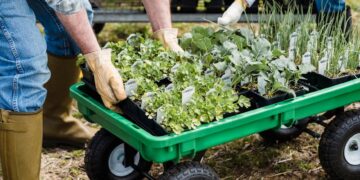Unlock the Secrets of Seasonal Plant Care: Tips for Every Gardener
Whether you’re cultivating a lush garden or caring for a single houseplant, understanding the nuances of seasonal plant care can dramatically boost your gardening success. Each season brings unique challenges and opportunities for gardeners. By adopting a season-specific approach to plant care, you can not only maintain plant health but also enhance your garden’s beauty throughout the year.
The Basics of Seasonal Plant Care
Understanding Plant Requirements
Before diving into specific seasonal tips, it’s crucial to understand that plants have different needs based on time of year, climate, and their specific life cycle stages. Light, water, temperature, and soil nutrients play varying roles from season to season. This guide is here to navigate those changing needs, ensuring your plants get exactly what they need when they need it.
Spring: Awakening and Growth
Revitalize Your Soil
Spring is the time for rebirth and rejuvenation. After the long winter, soil often needs to be revitalized. Start by turning the soil and mixing in fresh compost or manure to replenish nutrients. This is also the perfect time to test the pH balance of your soil and make adjustments as necessary.
Prune to Promote Health
Early spring is ideal for pruning most perennials and shrubs. This encourages healthy new growth and helps plants focus their energy on the strongest branches. Remember, the goal of pruning is to allow light and air to penetrate the plant, which helps to reduce the risk of disease.
Begin Planting After Last Frost
Monitoring local frost dates is crucial. Once the danger of frost has passed, begin sowing seeds of flowers and vegetables suited for your region’s climate. Planting bulbs in the spring can also lead to delightful summer blooms.
Summer: Maintenance and Monitoring
Irrigation Strategies
As temperatures rise, maintaining adequate moisture is key. Employ watering strategies such as early morning watering to reduce evaporation and use mulch around plants to help retain soil moisture. Consider setting up a rain barrel to collect water for watering plants, which is both eco-friendly and economical.
Pest and Disease Control
Summer can bring pests and diseases. Regularly inspect plants for signs of stress, such as discolored leaves or stunted growth. Use natural predators, like ladybugs, to manage aphids, and neem oil or other organic options for broader pest issues.
Supporting Plants
As plants grow, they might need extra support. Stake taller plants or those with heavy blooms to prevent damage from wind or rain. This is also the time to pinch back herbs and flowering plants to encourage bushy growth and continuous blooms.
Fall: Preparation for Dormancy
Harvest and Deadhead
Fall is harvest time for many vegetables and fruits. It’s also time to deadhead spent flowers and collect seeds for next planting season. This not only cleans up your garden but helps to prevent the spread of disease.
Planting Perennials and Spring Bulbs
Fall is the ideal season to plant perennials, trees, and shrubs, as the cooler temperatures help ease new plantings into natural rain cycles and moderate weather. Additionally, planting spring bulbs in fall ensures a burst of color early in the new year.
Prepare for the Cold
Protect sensitive plants from upcoming frost by using frost cloths or moving them indoors if possible. Mulching around the base of plants can also help insulate roots from sudden drops in temperature and keep the soil temperature stable.
Winter: Rest and Plan
Indoor Plant Care
Winter care shifts focus mostly indoors. Reduce watering as plant growth generally slows down and ensure they receive enough light, especially in areas with shorter daylight hours. This is also a great time to begin planning next year’s garden, researching plant varieties and garden layouts.
Winter Pruning
For certain plants, such as fruit trees and roses, late winter is the prime time for heavier pruning before new growth begins with the onset of spring weather.
Concluding Thoughts
Seasonal plant care doesn’t just keep your garden alive; it helps it thrive year-round. Each season has its own charm and challenges, but with the right knowledge and a little effort, you can create a vibrant garden that responds beautifully to the changing seasons. Keep learning, stay prepared, and enjoy the dynamic journey of gardening!




















































